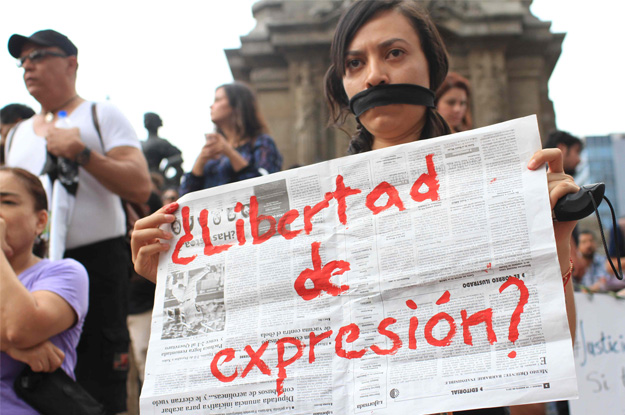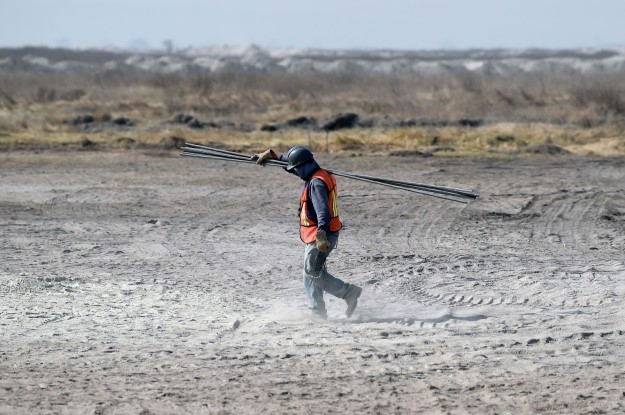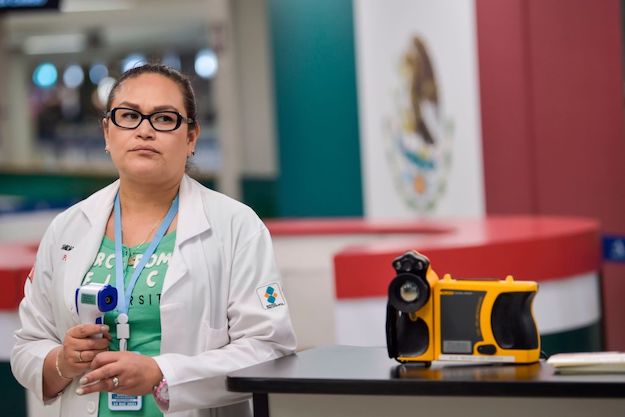Hours after photojournalist Rubén Espinosa and four others were found dead in a Mexico City apartment on July 31, much of Mexico’s traditional media had settled on a theory: This was a run-of-the-mill drug crime.
In a video newscast titled “They didn’t kill him because he was a journalist,” Luis Cárdenas López, a reporter for MVS, a radio news juggernaut, declared the true target of the attack was a Colombian woman whose body was found along with Espinosa and the other three victims.
“It appears the crime was related to the consumption, the trafficking of drugs [and] the other [victims] were in the wrong place at the wrong time,” the newscast said. Reports from television giant Televisa and Mexico’s most important newspaper, El Universal, took similar tacks. Mexico’s most watched news reporter, Televisa’s Joaquín López Dóriga, did not mention the history of persecution of journalists in Veracruz in his newscast about the murders. Many Mexicans complain that Televisa, which controls 70 percent of the broadcast TV market, doesn’t do enough to critique government policy and hold elected officials accountable.
Such one-sided coverage by legacy media outlets sparked an explosion of criticism among Mexico’s emerging class of social media users who are deeply suspicious of their country’s old-school media outlets. Mexico City-based political scientist Jose Merino tweeted “a country where ‘Colombiana’ and ‘escort’ are used to infer causes of murder but not ‘activist,’ ‘journalist’ or ‘threatened’…”
While the true motives behind Espinosa’s death remain unknown, more independent-minded media outlets have focused on the possibility that he was in fact killed because of his profession. Espinosa is the twelfth journalist from Veracruz state to be killed since 2011. At minimum it appears that there is a pattern at work that is worth mentioning. (Mexico, after all, is widely considered to be the most dangerous country in Latin America for journalists.)
During 71 years of one-party rule that ended only in 2000, the Institutional Revolutionary Party (PRI) consolidated its control over Mexico’s political life – including the media. Following the massacre of student activists in the Plaza de Las Tres Culturas in Mexico City in 1968, a new generation of critical news magazines such as Proceso and Nexos emerged to provide an alternative perspective. The PRI’s current leadership, which returned to power in 2012 under President Enrique Peña Nieto, have promised that the old days are over and said they would like to increase competition in the media world. As a rule in Mexico, however, many local media outlets remain beholden to government funding – and thus hesitate to publish stories about topics such as corruption, or provide context and analysis to coverage of incidents such as the murder of a journalist, that could cast authorities in a bad light. Furthermore, in many parts of the country editors face explicit threats from organized crime groups about coverage of violence and drug trafficking.
The prevalent culture of self-censorship at many small local media outlets makes demanding justice for deaths such as Espinosa’s much more difficult. This was on the minds of many who attended a large rally on August 2 to protest his death. “In Mexico the media is funded by the government, that’s the problem,” César Ruiz Galicia, a Mexico City-based journalist, told AQ. Others at the rally held up signs that said, “Being an honest journalist means death” and “Freedom of expression now!”
Other, newer outlets have tried to pick up the slack – often under trying circumstances. SinEmbargo, Animal Politico, and Horizontal are three new media outlets that are experimenting with cutting production costs and reliance on advertising revenue and engaging exclusively in publishing critical news analysis. In states such as Veracruz and Sinaloa, however, digital journalism has not provided a shield from the threat of organized crime. One month before Espinosa was found dead, another Veracruz journalist, Juan Mendoza Delgado, was killed. He was the founder of a small-time digital media start-up called Escribiendo La Verdad (Writing The Truth.)
Lu Soriano, a 24-year-old protester who held up a hand-drawn poster of a broken and blood-stained camera at the rally, said that some topics seem off-limits to aspiring investigative reporters. “Drugs, the narco-government nexus, corruption, those are the topics that you shouldn’t cover in Mexico. If you cover them you are running a risk,” she explained. It’s a dynamic that is unfortunately not likely to change any time soon for the reporters on the front lines of Mexico’s drug war.








